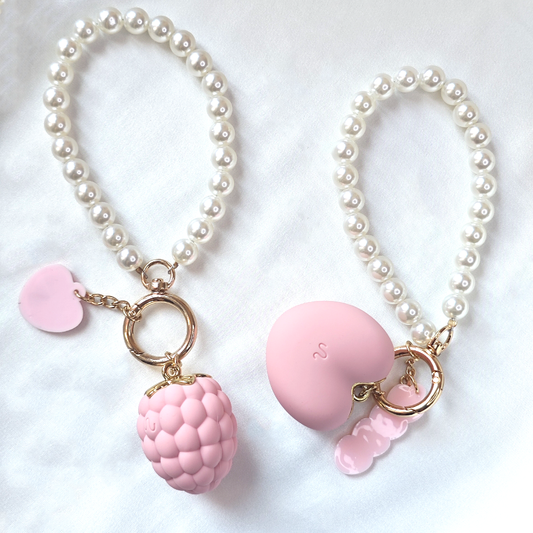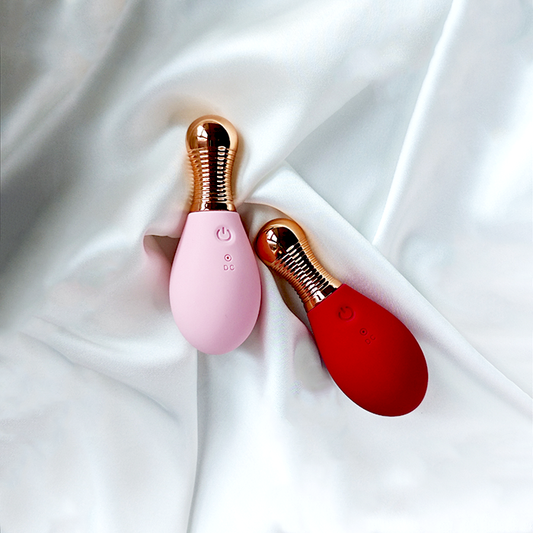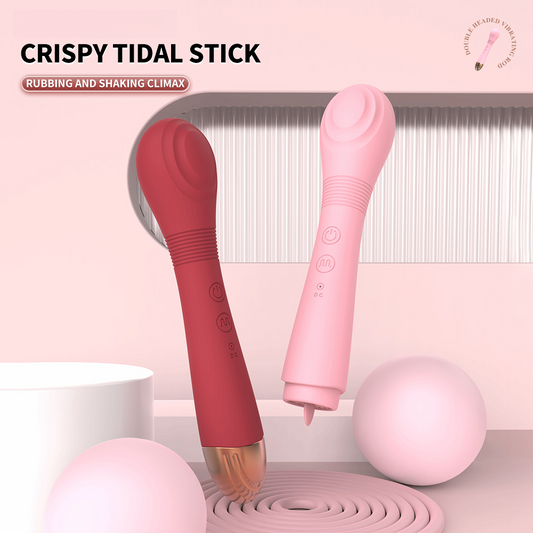
Le guide de sécurité des jouets sexuels : comment rester excité
Les sextoys ont parcouru un long chemin, passant des tiroirs secrets du passé à la gloire glamour de la culture du plaisir moderne. Mais cette liberté s'accompagne d'une question que beaucoup négligent encore :
Vos jouets sont-ils réellement sans danger pour votre corps ?
Ce n’est pas l’aspect le plus excitant du plaisir personnel auquel penser, mais c’est sans doute le plus important.
- Quelque chose peut être agréable, mais cela ne devrait pas provoquer d’effets secondaires.
- Les effets secondaires peuvent inclure des éruptions cutanées ou des irritations.
- Il ne doit pas non plus vous exposer à des matières nocives.
Discutons Ce qui rend un sextoy sans danger pour votre corps. Nous aborderons également son nettoyage et son rangement. Enfin, nous examinerons ce que la science dit sur la santé et le plaisir.
1. Pourquoi la sécurité des sextoys est importante
L'industrie des sextoys connaît une croissance rapide. Son chiffre d'affaires mondial dépasserait 36 milliards de dollars en 2024 .
Cependant, ce secteur reste largement non réglementé dans de nombreux pays. La plupart des produits pour adultes ne nécessitent pas d'approbation formelle d'organismes comme la FDA, sauf si les entreprises les présentent comme ayant des visées thérapeutiques ou de santé.
Cela signifie que n'importe qui peut vendre un objet appelé « vibromasseur » ou « masseur » sans vérifier son contenu. Des chercheurs ont découvert que certains jouets bon marché contiennent des phtalates .
Ce sont des produits chimiques qui peuvent affecter les hormones. Ils peuvent également contenir des allergènes ou des colorants au latex . Ces colorants ne doivent pas entrer en contact avec les muqueuses.
Un rapport de 2018 de l' Agence danoise de protection de l'environnement a révélé un problème préoccupant : certains vibromasseurs bon marché en gel contenaient plus de 30 % de phtalates en poids. Un jouet pour enfant ne devrait pas contenir une telle quantité.
Alors oui, l'expression « traitez votre vulve comme si c'était un article de luxe » n'est pas seulement du marketing, c'est de la chimie.
2. Comprendre « Sécurité corporelle » : ce que cela signifie réellement
Lorsqu'un jouet est étiqueté « sans danger pour le corps » , cela signifie qu'il est fabriqué à partir de matériaux qui sont :
- Non toxique (sans produits chimiques nocifs ni substances lixiviables)
- Les matériaux non poreux permettent un nettoyage complet, ne laissant aucune bactérie se cacher à l'intérieur.
- Hypoallergénique (peu susceptible de provoquer des irritations ou des réactions allergiques)
- Biocompatible (sans danger pour un contact prolongé avec la peau ou les muqueuses)
Malheureusement, personne ne réglemente ces allégations. La meilleure défense réside donc dans l'éducation et la transparence des marques . Privilégiez les produits qui indiquent la composition complète de leurs matériaux, bénéficient de certifications de sécurité indépendantes ou respectent des normes de qualité médicale.
3. Le débat sur les matériaux : ce qui est sûr et ce qui ne l’est pas
Soyons honnêtes, les matériaux qui composent votre sextoy sont primordiaux. Vous trouverez ci-dessous un aperçu des matériaux courants et de leur impact sur la sécurité, les sensations et la durabilité.
Silicone (de qualité médicale ou vulcanisé au platine)
La référence en matière de sextoys modernes.
- Pourquoi c'est génial : Non poreux, flexible, hypoallergénique, inodore et facile à stériliser.
- Vérification scientifique : le silicone de qualité médicale est inerte et biocompatible ; il ne libère pas de substances chimiques et ne se dégrade pas lors d’une utilisation normale.
- Nettoyage : Laver à l’eau tiède et au savon doux, ou faire bouillir pendant 3 minutes s’il n’y a pas de pièces électriques.
Conseil de pro : Le silicone véritable a un fini mat velouté. S’il est collant ou sent le plastique, il est probablement mélangé à du TPE (et n’est donc pas vraiment sans danger pour le corps).
TPE / TPR (élastomères ou caoutchoucs thermoplastiques)
Doux, moelleux et bon marché, mais c'est là que s'arrête l'histoire d'amour.
- Poreux : des bactéries peuvent vivre à l'intérieur de pores microscopiques, même après lavage.
- Durée de vie courte : se dégrade, devient collant et attire la poussière.
- Certains produits peuvent contenir des phtalates : même si certains fabricants les étiquettent comme « sans phtalates », des tests en laboratoire en révèlent souvent des traces.
Ils sont agréables au début, mais dans le monde des sextoys, ce ne sont que des aventures d'un soir . Si vous utilisez des sextoys en TPE, utilisez un préservatif et changez-les régulièrement.
Plastique ABS
Un plastique dur et brillant souvent utilisé pour les vibromasseurs à balle et les télécommandes.
- Non poreux et hypoallergénique.
- Facile à nettoyer.
- Peu coûteux et durable.
- Idéal pour une stimulation ferme ou associé à des embouts en silicone .
Acier inoxydable, verre et aluminium
- Non poreux et ultra-résistant.
- Vous pouvez le stériliser complètement.
- Parfait pour Jouez avec la température, chauffez ou refroidissez-les simplement en toute sécurité (jamais à des températures extrêmes).
- L'insertion requiert plus de précautions car elles sont rigides ; utilisez toujours beaucoup de lubrifiant.
Les jouets en métal et en verre de haute qualité (comme le verre borosilicate) sont inertes, sûrs et peuvent durer toute une vie.
Jouets en gelée, en PVC et à « sensation réaliste »
Souvent présentés comme « réalistes » ou « doux comme la peau », ces jouets sont les plus problématiques.
- Poreux, collant et impossible à nettoyer.
- Risque phtalates : De nombreuses études ont confirmé des concentrations élevées de ces perturbateurs endocriniens.
- Alerte odeur : si un jouet sent l'intérieur d'une voiture neuve ou un sac en plastique, c'est un signal d'alarme.
Vous ne mangeriez pas dans une assiette en plastique toxique, alors n'en utilisez pas une pour vos parties génitales.
4. Compatibilité des lubrifiants : le mélange est important
Le lubrifiant n'est pas une option ; il est indispensable. Mais certaines combinaisons peuvent endommager votre sextoy ou irriter votre peau.
| Matériau du jouet | Type de lubrifiant compatible | Éviter |
|---|---|---|
| Silicone | À base d'eau | À base de silicone |
| TPE / TPR | À base d'eau | À base de silicone ou d'huile |
| Métal / Verre | N'importe lequel (mais testez le confort cutané) | — |
| Plastique ABS | N'importe lequel | — |
Silicone + silicone = désastre. La surface de votre jouet deviendra collante.
Les lubrifiants à base d’huile (comme l’huile de coco) conviennent aux jeux en solo avec des jouets en métal ou en verre, mais pas avec des préservatifs ou du silicone.
Les lubrifiants à base d'eau sont l'option la plus sûre et la plus universelle. Ils sont doux, faciles à nettoyer et compatibles avec les préservatifs.
5. Nettoyage : là où la vraie magie opère
Une bonne hygiène ne se résume pas à être propre, c'est littéralement ce qui permet de prévenir les infections, les vaginoses bactériennes ou les irritations.
Routine de base
- Rincez le jouet à l'eau tiède immédiatement après utilisation.
- Utilisez un savon sans parfum ou un nettoyant pour jouets spécifique (vérifiez qu'il existe des formules sans alcool).
- Rincez à nouveau et séchez en tapotant avec une serviette propre.
- À conserver uniquement une fois complètement sec.
Nettoyage en profondeur des jouets non électroniques
- Faire bouillir pendant 3 à 5 minutes
- Essuyer avec de l'alcool isopropylique à 70 %
- Passez-le au lave-vaisselle (panier supérieur, sans savon) si l'étiquette du jouet indique que c'est sans danger.
Pour les jouets partagés
Utilisez des préservatifs plutôt que des jouets pour réduire la contamination croisée, surtout si vous alternez entre les jeux anaux et vaginaux. Des bactéries comme E. coli peuvent provoquer des infections en cas de transfert entre les zones.
Conseil de pro : si vous ne le léchez pas, ne le remettez pas dans votre corps tant qu'il n'est pas propre.
6. Rangement : Gardez-le propre et privé
Vos jouets méritent mieux qu'un tiroir poussiéreux.
Règles empiriques
- Gardez les jouets séparés, le silicone et la gelée peuvent fondre ensemble s'ils sont stockés en se touchant.
- Utilisez des sacs de rangement en tissu (souvent inclus) ou enveloppez-les dans des chiffons en microfibre propres.
- Évitez les températures et l'humidité extrêmes.
- Conserver dans un endroit frais et sombre, pas à côté de votre sèche-cheveux.
Et oui, nettoyer avant stockage est aussi important que nettoyer après utilisation.
7. Repérer les signes avant-coureurs : quand mettre un jouet au rebut
Même les meilleurs matériaux ont une durée de vie. Remplacez votre jouet si :
- Il devient collant, poisseux ou se décolore.
- Vous remarquez des fissures ou des craquelures à la surface.
- Ça sent mauvais, même après le nettoyage.
- Vous ressentez une irritation ou une brûlure après utilisation.
Si vous utilisez fréquemment la plupart des sextoys, vous devriez les remplacer tous les 1 à 2 ans. Considérez cela comme un soin d'hygiène intime.
8. Santé et sécurité : ce que disent les experts
Des études montrent que la plupart des irritations ou infections liées à l'utilisation de jouets proviennent de De mauvaises habitudes d'hygiène ou l'utilisation de matériaux poreux peuvent être en cause. Une étude publiée dans Sexual Health (2017) a révélé que jusqu'à 25 % des femmes ont signalé des infections mineures. Ces problèmes étaient liés à l'utilisation de sextoys partagés ou mal nettoyés.
L’ Organisation mondiale de la santé (OMS) et la FDA soulignent toutes deux que la biocompatibilité des matériaux est essentielle pour tout dispositif à usage interne, y compris les dispositifs non médicaux.
Évitez les additifs toxiques
- Phtalates : liés à des perturbations hormonales. (Réf. : Hauser & Calafat, Environmental Health Perspectives , 2005)
- Bisphénol A (BPA) : Présent dans les plastiques bon marché ; peut imiter les œstrogènes.
- Latex : Peut provoquer des réactions allergiques, des démangeaisons ou un gonflement.
Recherchez les jouets portant explicitement l'étiquette :
« 100 % silicone de qualité médicale, sans phtalates, sans latex, sans BPA. »
Si l'emballage ne le précise pas, partez du principe que ce n'est pas le cas.
9. Le lien plaisir-santé
Les sextoys sûrs ne servent pas seulement à éviter les risques, ils contribuent activement au bien-être sexuel .
Selon l' Institut Kinsey , la pratique régulière du jeu en solo peut :
- Améliorer le sommeil et réduire le stress.
- Renforcez les muscles du plancher pelvien.
- Améliorer la confiance en soi et les connaissances sexuelles.
- Aider les gens à explorer leurs limites en toute sécurité.
Lorsque vous utilisez des jouets propres et sans danger pour le corps , vous ne recherchez pas seulement le plaisir, vous prenez aussi soin de votre santé.
10. Conclusion : La sécurité est le nouveau sexy
Vous n'appliqueriez pas de lotion mystérieuse sur votre visage, alors pourquoi laisser des substances mystérieuses s'approcher de vos parties génitales ?
L'utilisation sécuritaire des sextoys repose à parts égales sur la science, l'amour de soi et le bon sens :
- Choisissez des matériaux sans danger pour le corps (silicone, ABS, verre, acier).
- Utilisez le lubrifiant approprié (généralement à base d'eau).
- Nettoyer avant et après chaque utilisation.
- Rangez-le correctement, partagez-le en toute sécurité et remplacez-le lorsqu'il est usé.
Un peu de conscience peut faire beaucoup. Car le véritable plaisir, c'est de savoir que votre plaisir ne fait pas mal à votre corps.
Références
L’utilisation de jouets sexuels comme marqueur de la santé sexuelle chez les femmes : résultats d’une étude nationale.
Journal of Sexual Medicine , 8(12), 3100–3110. Évaluation biologique des dispositifs médicaux : Partie 1 — Guide pour l'industrie.
Sortir les jouets sexuels de l'ombre : explorer les risques absolus
Prévalence et caractéristiques de l'utilisation des vibromasseurs par les femmes aux États-Unis











